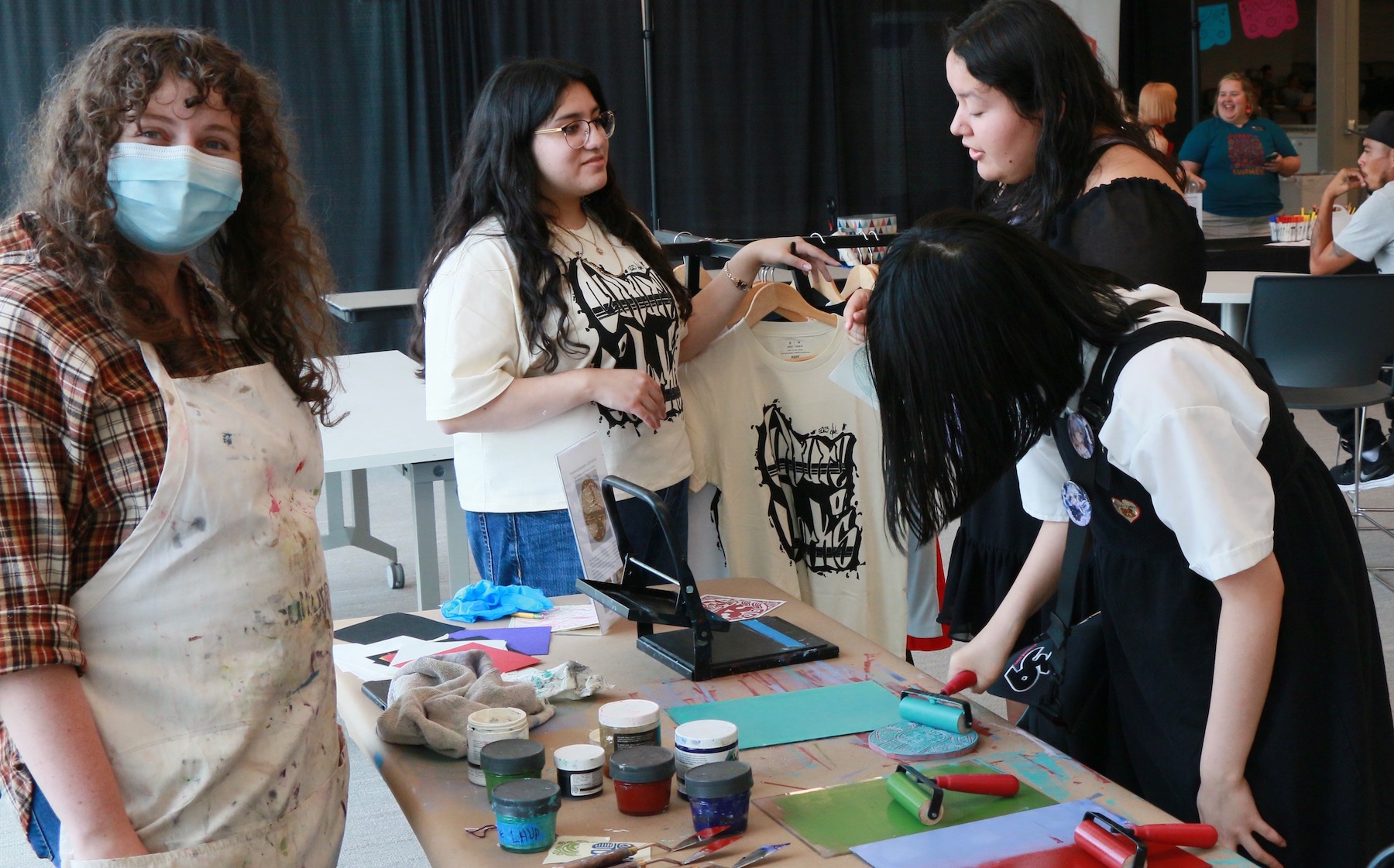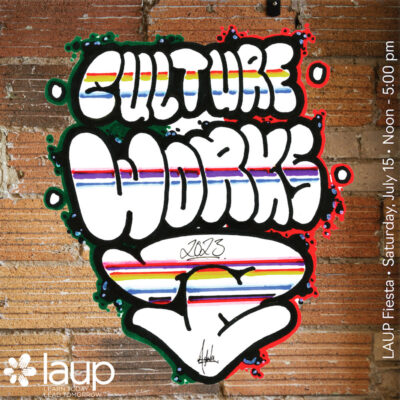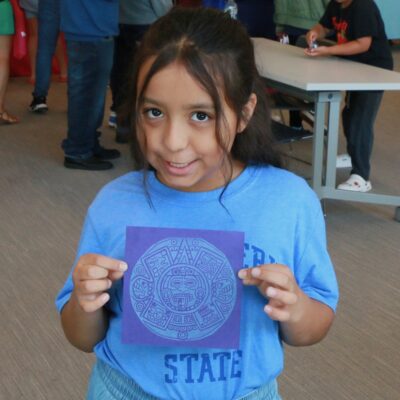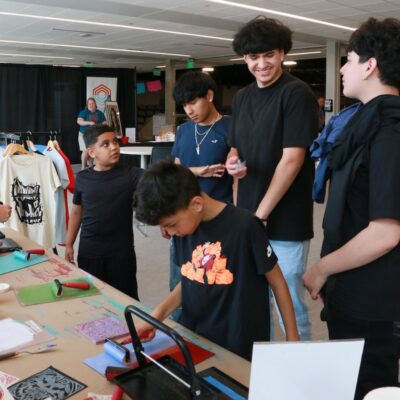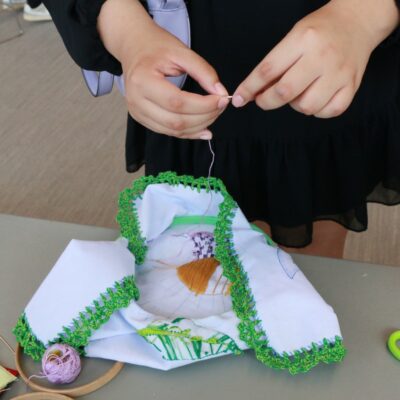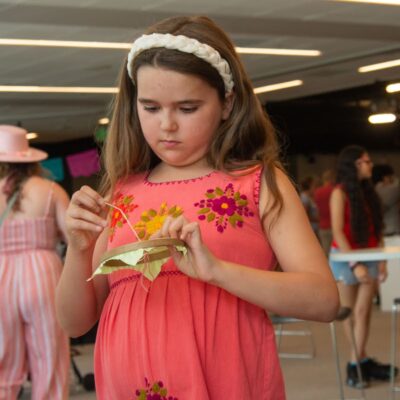Celebrating the rich tapestry of Latin American culture and heritage in the Holland community with LAUP!
It was such a joy to be a part of LAUP Fiesta again this year! We brought 3 hands on art activities for participants and connected with nearly 300 participants through printmaking, embroidery, and painting.
Special thanks to Josephine Suarez (and her mom) for kicking off our collaborative Servilletas bordadas with gorgeous stitches and crochet work, and to Josephine and Ava for carving the lino blocks for printing. We were also super excited to commission a design from local artist and graffiti instructor, Miguel Ayala, who helped us print limited edition T-shirts for the occasion.
Fiesta press coverage in MLive; interview with Miranda Craig
About the lino block print designs:
Panamanian Breastplate c.1150-1400 AD
Parita, Panama Azuero Peninsula, Columbia
This particular plate and many others like it are made of gold and copper alloy, hammered to desired thickness, & then embossed and chiseled with images of supernatural deities. This image is likely the Crocodile God, a seemingly collective being made of iguanas, sharks, deer and other creature characteristics. These plates were likely not used during war or battles, but instead to decorate powerful individuals in their burials. Such people were also buried with whale/shark teeth, their attendants, other gold ornaments, and pottery also with the Crocodile God. The lino block is the same size as the plate would have been in real life.
Piedra del Sol (Aztec Calendar Stone)
The Aztec Sun Stone or Calendar Stone is one of the most famous ancient Mexican sculptures and has been reproduced in most mediums and at all different sizes for centuries.
The Aztec empire dominated most of Mexico from around 1325 – 1520, when the Spanish invaded and colonized the region. They buried the stone face down beneath Zócalo (now the main plaza of Mexico City). The stone is 24 tons and 12 feet in diameter and was not a calendar at all. Though some of the symbols represent the 20 days within the Aztec calendar month, the stone was actually used as a sacrificial altar called cuauhxicalli (Eagle Vessel). The stone was rediscovered in 1790.
The central face is either the day-sun god ‘Tonatiuh’, the night-sun god ‘Yohualtonatiuh’, or earth god ‘Tlaltecuhtli’.
The four squares are the four eras (counter clockwise starting top right: Jaguar, wind, rain, water; being the day of the month that the era ended). Each era ended with the destruction of the world as one of the five suns fell to the earth, and the next era began with its recreation. If the inner face is the earth god, then this circle represents the fifth era.
The smallest ring are each of the 20 days (Crocodile – cipactli, Wind – ehécatl, House – calli, Lizard – cuetzpallin, Serpent – cóatl, Death – miquiztli, Deer – mázatl, Rabbit – tochtli, Water – atl, Dog – itzcuintli, Monkey – ozomatli, Grass – malinalli, Reed – ácatl, Jaguar – océlotl, Eagle – cuauhtli, Buzzard – cozcacuauhtli, Movement – ollín, Flint – técpatl, Rain – quiahuitl, and Flower – xóchitl)
The outermost ring are two Xiuhcoatl (fire serpents). The human-like heads emerging from the serpents’ mouths are possibly the gods Queztalcoatl (god of and Tezcatlipoca. They are rival deities who have fought for control over the cosmos.




